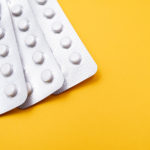By David Blyweiss, M.D., Advanced Natural Wellness
February 20, 2017
- Are you suffering from low T?
- Why hormone replacement therapy isn’t your best option
- Here’s how to put the tiger back into your tank
If you’re running low on testosterone, you probably feel like your “get up and go got up and went” – in more ways than one!
Not only is it likely that your bedroom activities are failing, but you may also be experiencing feelings of aimlessness, loss of energy and a general dissatisfaction with life. Tack on an expanding waistline, decreased muscle mass and the development of breast tissue… Well, any man would feel miserable.
This makes the idea of turning to testosterone replacement therapy (TRT) very appealing. In fact the appeal is so great that, over a single decade, testosterone prescriptions here in the U.S. increased 10 times over.
Believe me, I get it. Watch the commercials and it’s easy to imagine that after a month or two of treatment you’ll be the talk of the town – energetic, sexy and healthier looking than you’ve been in years.
But before you turn to synthetic testosterone treatments in an effort to put the tiger back in your tank, there are a few things you should be aware of.
MD Exposes the Hidden Danger to Your Eyes

When your eyesight starts to fail, it's a real problem. Suddenly you can't go to the grocery store... you can't get to the doctor if you have an emergency... you can't meet your friends for dinner…
Your "regular" doctor doesn't have time to keep up with the latest research. And the same goes for eye doctors. They go to school to learn how to fit you for glasses and contacts, but have no way of preventing the damage and loss of eyesight that threatens your freedom and independence.
Let me show you something that explains a LOT about how your eyes work.
In my FREE Special Report, I'll show you a HUGE, untapped resource for your eyes that safely and naturally restores clear, effortless eyesight.
Click here to get started...
Why Testosterone Replacement Therapy isn’t Your Best Option
One of the most important things to make note of is that mainstream TRT doesn’t replace your natural male hormones. In fact, these treatments aren’t hormones at all. They’re synthetic… fake hormones that are made by man.
With that in mind, it’s no wonder that with the added synthetic ingredients they come with, a plethora of unwanted side effects occurs.
You see, these drugs stimulate the production of red blood cells. And while that may not sound particularly harmful, it can easily lead to the development of blood clots. In fact, in the very first six months of treatment, it can boost your chances of developing a clot by two-thirds.
Now I’m sure that you know of the damage blood clots can cause.
As they travel through your bloodstream they can block blood flow. This, in turn, could result in a heart attack or stroke. These clots can even damage the organs in your body and, in some instances, trigger sudden death.
I think you’ll agree that these are some extremely high stake trade offs. And I’d rather you avoid them altogether.
That being said, let’s take a look at some less risky – and extremely effective – ways to restore your effective testosterone level.
Are You Suffering From...
- Love handles and a pot belly
- Romance that isn't what it used to
- Forgetfulness and inattention
- Low (or no) strength and endurance
- A sex drive that's shifted into neutral...or worse
If so...you may have Mature Male Burnout. Click here to discover more about this unique condition and what you can do about it.
Here’s how to put the Tiger back into Your Tank
The most important form of testosterone in your body is the testosterone that’s “free”. This is the type most potent and readily available to your cells. Unfortunately, it only accounts for about 2% of your total testosterone levels.
The rest of it is “bound”, which means body can’t use it. It’s simply not available to your cells.
You can free up more testosterone by reducing the substance most of it’s bound to. This compound is called sex hormone binding globulin (SHBG).
When SHBG levels are high, your levels of free testosterone go down. But when you’re levels of SHBG go down, free testosterone goes up. So the idea is to reduce the amount of SHBG in your body.
- There’s an herb called tongkat ali that stimulates the production of testosterone while, at the same time, inhibiting SHBG. This allows more free testosterone to remain in your bloodstream. It only takes 100 mg daily to kick your testosterone levels up.
- Forskolin is another herb that helps increase testosterone values and boost free testosterone levels. In fact, in just a few short months it can boost free testosterone by about three and a half percent. Take 500 mg each day.
- Taking a vitamin D3 supplement in the form of cholecalciferol can increase free testosterone by up to 20%. 1,000 to 2,000 IU each day should do the trick. However, if you’ve been diagnosed as vitamin D deficient (30 or less), I recommend up to 5,000 IU daily…retesting your levels around 3 months later.
- Even better is to control your eating habits to maintain your insulin levels within optimal ranges, which helps keep your SHBG levels lower.
If you find you need a bigger boost, I recommend talking with an integrative physician in your area that specializes in bio-identical hormone replacement therapy, or BHRT.
This type of replacement therapy uses bio-identical hormones that are exact copies of the hormones your body naturally produces. This means your body will naturally respond to them and give you the results you’re looking for. As with any hormone replacement therapies, checking levels and keeping regularly scheduled follow ups with your prescribing physician are important.
BHRT is a much safer alternative to mainstream testosterone replacement therapy. It is safer, more effective and costs less.
SOURCES:
Handelsman DJ. Global trends in testosterone prescribing, 2000-2011: expanding the spectrum of prescription drug misuse. Med J Aust. 2013 Oct 21;199(8):548-51.
Martinez C, et al. Testosterone treatment and risk of venous thromboembolism: population based case-control study. BMJ 2016;355:i5968
FDA cautions about using testosterone products for low testosterone due to aging; requires labeling change to inform of possible increased risk of heart attack and stroke with use. FDA Drug Safety Communication. Mar 2015.
Pilz S, et al. Effect of vitamin D supplementation on testosterone levels in men. Horm Metab Res. 2011 Mar;43(3):223-5.
Wehr E, et al. Association of vitamin D status with serum androgen levels in men. Clin Endocrinol (Oxf). 2010 Aug;73(2):243-8.
Mohd Effendy N, et al. Eurycoma longifolia: Medicinal Plant in the Prevention and Treatment of Male Osteoporosis due to Androgen Deficiency. Evid Based Complement Alternat Med. 2012;2012:125761.
Godard MP, et al. Body composition and hormonal adaptations associated with forskolin consumption in overweight and obese men. Obes Res. 2005 Aug;13(8):1335-43.







